We have been playing and evaluating Resident Evil 7 Biohazard (RE 7) on PC since it was released one week ago. Although we did not like what the Resident Evil series had become, and although we didn’t have high expectations for this game, we were immediately drawn into it, and have completed it after about 15 hours of play in three long sessions, ignoring all of our other work and duties. It is *that* good.

Here are our impressions of RE 7, including a mini-performance and IQ evaluation using 18 of NVIDIA’s and AMD’s top video cards.
Resident Evil 7 was released last Tuesday morning on January 24. Resident Evil Biohazard is a first-person shooter video game developed and published by Capcom for Microsoft Windows, PlayStation 4 and Xbox One. It is the eleventh installment of the popular Resident Evil series and it is the first time that it is played from the first person view, usually the series is played from the third person view.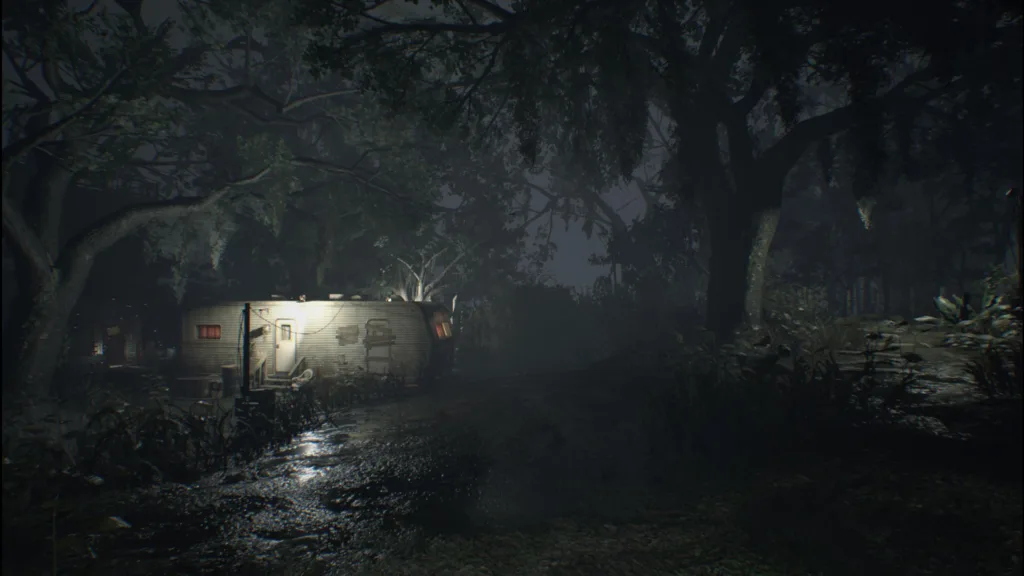
Set about 4 years after the events of Resident Evil 6 and in the same universe, the story follows the player as Ethan Winters, an ordinary man armed only in the beginning with a flashlight and with his wits to survive. Shortly after starting the game, you find your wife Mia, who has been missing in action for the past 3 years, in a apparently abandoned plantation, that was home to the Baker family. The rest of the game is a struggle just to survive against overwhelming odds and with little in the way of weapons.
Fortunately, you can help Ethan find, make, and use various weapons and tools in the fight against the Baker family and versus creatures known as the “Molded”. Healing herbs can be used in the event of injury and stronger meds can be concocted from herbs combined with chemicals, and puzzles may be solved to further the story.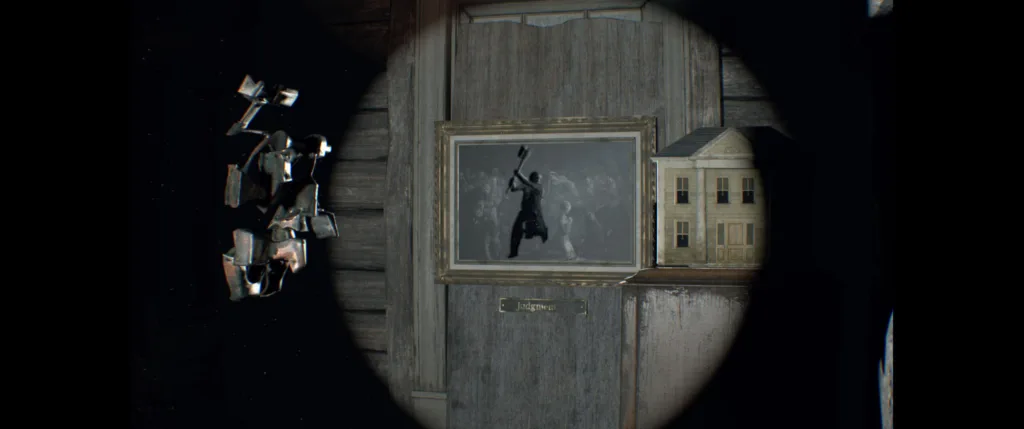
The events of RE 7 center around an abandoned plantation in Dulvey, Louisiana. Ethan finds Mia imprisoned in the basement of the main house. While they attempt to escape, Mia becomes possessed and attacks Ethan, who kills her to survive. Ethan is next attacked by a resurrected Mia and subsequently knocked out by Jack Baker, the head of the Baker family. Ethan is held captive by Jack, his wife Marguerite, their son Lucas, and an old lady sleeping in a wheelchair.
Although Ethan escapes his captors, he is repeatedly confronted by Jack, who like Mia and the rest of the family, can apparently regenerate from fatal wounds. Jack is a special enemy that pursues Ethan relentlessly and in the beginning, he cannot be stopped – he will even break through walls to get to you. You will have to run and hide until it is time to face him repeatedly as a boss until you can find a more permanent solution.
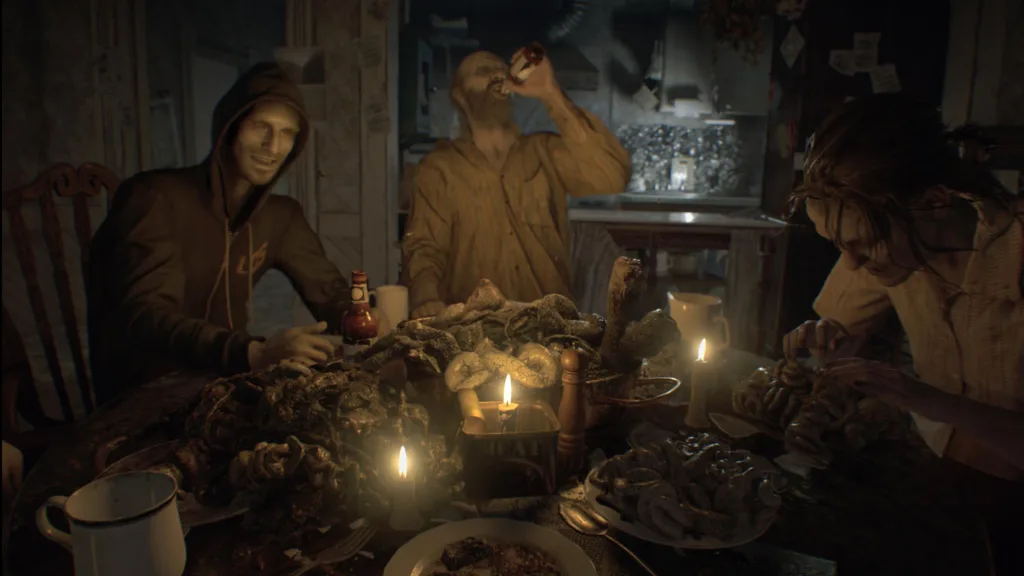
RE 7 gameplay is a more traditional survival horror game which are not action and fighting oriented like RE 5 and RE 6 are. Returning to it’s Resident Evil roots, RE 7 focuses more heavily on horror, and there are many events that will make a player jump. Like earlier Resident Evil games, puzzle-solving and resource management are important to success. The player never feels that he has enough bullets even after searching everywhere for them, and special weapons like a homemade flamethrower provide a bit of welcome relief.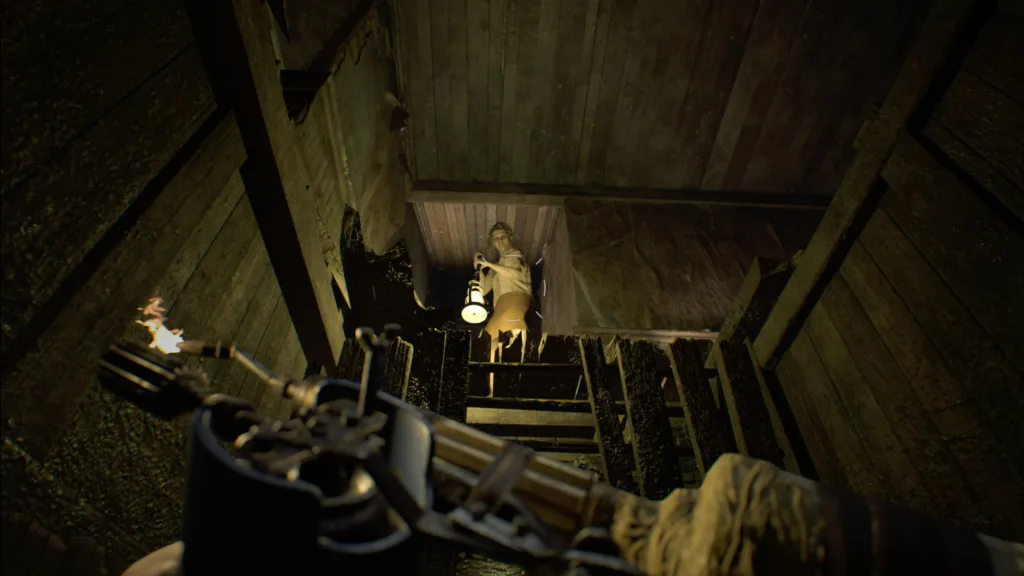
For this evaluation, we are focusing on the single player campaign which will probably last for at least a dozen hours for the first playthrough. After you are done, you may unlock harder difficulty settings and may even bring a powerful weapon with you for subsequent playthroughs. And there is an achievement available for beating the game in less than 4 hours.
Here are the video cards that we tested at the highest settings at 1920×1080, 2560×1440, and at 3840×2160 resolutions with the very latest drivers:
- GTX TITAN XP 12GB
- GTX 1080 8GB
- GTX 1070 8GB
- GTX 1060 6GB
- GTX 1060 3GB
- GTX 1050 Ti 4GB
- GTX 980 Ti 6GB
- GTX 980 4GB
- GTX 970 4GB
- GTX 780 Ti 3GB
- GTX 770 – 2GB
- Fury X 4GB
- RX 480 8GB
- RX 470 4GB
- RX 460 4GB
- R9 290X 4GB
- RX 280X 3GB
- RX 270 3GB
NVIDIA is featured as “The Way it is Meant to be Played” in the opening screens. NVIDIA’s HBAO+ is a high level of Ambient Occlusion that adds to the atmosphere by creating better shadows and lighting. The settings are varied, from subterranean laboratory horror settings, to nighttime, to rare brightly lit daytime scenes, and the game makes good use of its own custom RE Engine capabilities.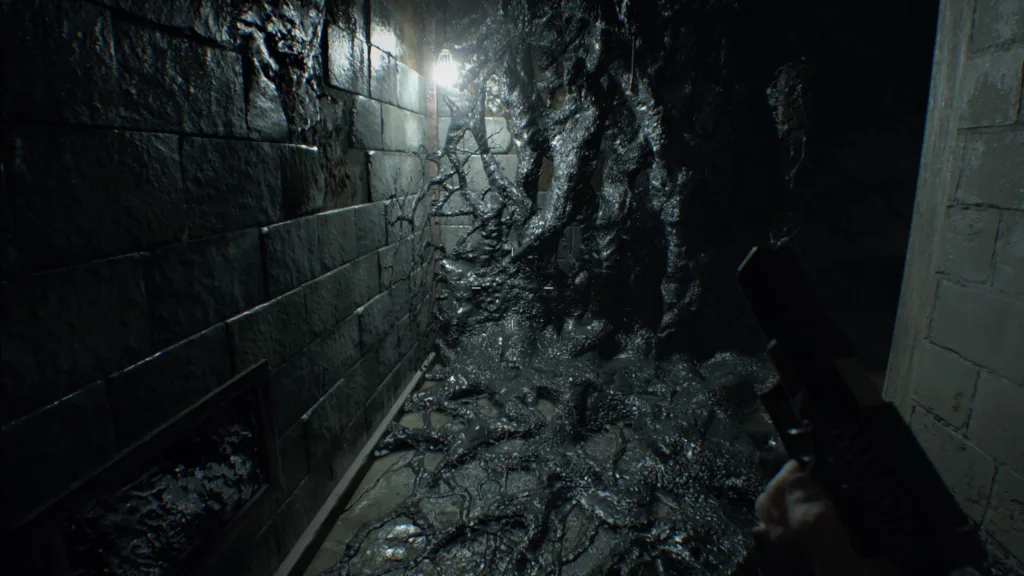 The story is very dark and absolutely not for the squeamish or for those offended by gore, guts, body parts and sadism. The RE 7 story is the stuff that nightmares are made of and it is more than adequate to move the action forward. And there is a lot of action, from running and hiding to confronting giant bosses with weak spots that need to be discovered and exploited.
The story is very dark and absolutely not for the squeamish or for those offended by gore, guts, body parts and sadism. The RE 7 story is the stuff that nightmares are made of and it is more than adequate to move the action forward. And there is a lot of action, from running and hiding to confronting giant bosses with weak spots that need to be discovered and exploited.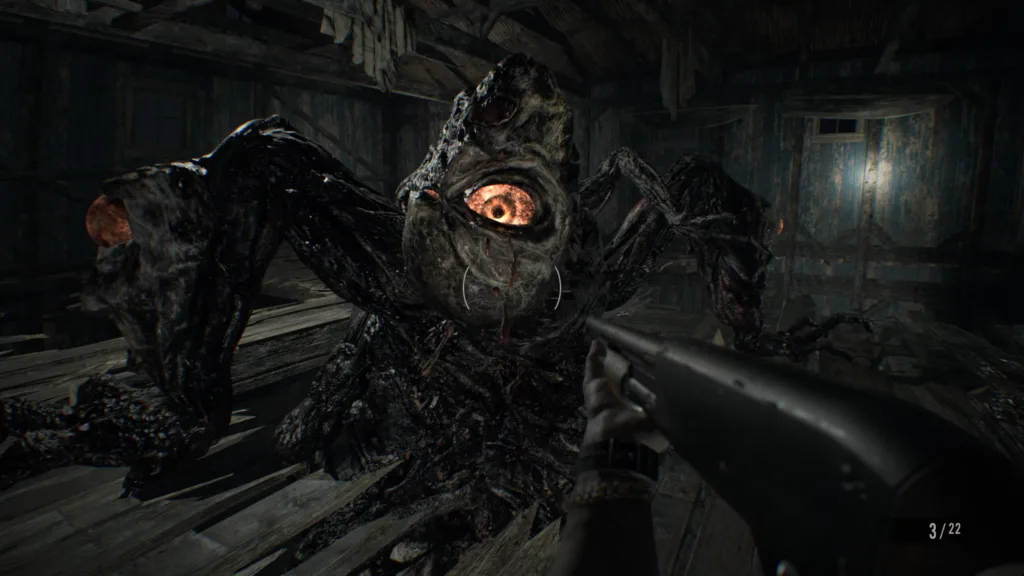 Although the game is rather linear, it does not feel that way and the player can approach objectives from multiple pathways. There is one choice that a player will have to make two-thirds of the way through the game that will even determine a “happy” or an “unhappy” ending.
Although the game is rather linear, it does not feel that way and the player can approach objectives from multiple pathways. There is one choice that a player will have to make two-thirds of the way through the game that will even determine a “happy” or an “unhappy” ending.
You have to experience RE 7 for yourself as a player to appreciate it much as you do a movie or a play, and not from viewing clips on a tablet, nor from watching Youtube gameplay videos. The settings although focused on a plantation, also feature some varied locations – from exploring a nearby shipwreck, to liberating a salt mine.
RE 7 is part of a series, and it captures the spirit of the earliest games and it expands on the horror element by moving to the first person view. The controls are easier to manage in this game than the earliest games of the series which are from the third-person viewpoint.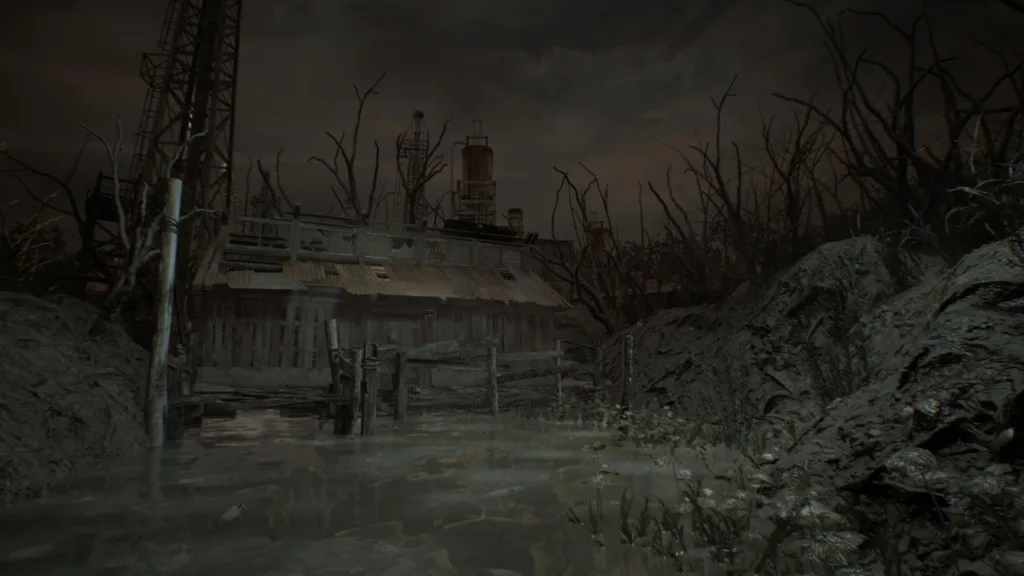
Although the story has a satisfying ending that answers a lot of questions and provides a coherent backstory, it leaves other questions unanswered for future downloadable content, and perhaps RE 8 to continue the story.
Gameplay
The gameplay is superb. In the first part of the game, the player is mostly just concerned with hiding, solving puzzles, and running to survive. Headshots are crucial as bullets are never in good supply even after the player finds a handgun. The computer controlled AI NPCs are adjusted by the game difficulty levels, and at the highest levels, they pursue the player relentlessly. There is a function (X on the keyboard) to spin the player 180 degrees in an instant to facilitate quick getaways which is a nice feature.
Checkpoint Saves and difficulty
This gamer hates the checkpoint system. However, this checkpoint system is particularly well implemented. There are times when they are far apart and the strategy of using “safe rooms” and a tape recorder to save in one of the 14 available slots is crucial to not repeating events or battles over and over. Mercifully, there are no Quick Time Events (QTEs) to react to.
Replayability
RE 7 has some replayability. Mostly a player will want to explore and find everything which may require 15 or more hours. You can start over and attempt to collect every item, or at a higher difficulty, but little changes unless you want to try the second ending. You also get to carry over a special weapon that you get in the ending of the first playthrough. And you can try to complete the game in under 4 hours which will win the player an achievement award.
Bugs, Graphics and Performance
There appear to be very few bugs that slow the game performance, and during more than 15 hours of play, we experienced a single lock-up which required us to restart the game. There have been a couple of patches since it was released last week, and RE 7 is a very polished experience. The implementation of DX11 in RE 7 is good, and it appears to be reasonably well optimized. However video memory does not appear to be well-managed, and even video cards with 3GB or 4GB of vRAM may suffer performance issues. Even 6GB appears to be less than ideal if you are playing at higher resolutioins. Shadow Cache is one of the settings that can impact performance. If you are using a 4GB vRAM-equipped video card or less, it may be best to turn it off. If you are using 6GB or more vRAM, it may improve performance.
Performance
We played RE 7 at the highest details and settings all the way through the campaign at 2560×1440 using our Pascal GTX 1080 and then replayed much of it with 17 other video cards using our Core i7-6700K at 4.0GHz where all 4 cores turbo to 4.4GHz, an ASRock Z7170 motherboard and 16GB of Kingston HyperX DDR4 at 3333MHz. The repeatable benchmark that we found was about 10-15% more demanding than the game’s average framerate, but about 10% less demanding than the toughest boss fights which slowed framerates the most.
On the next page, we will introduce static image quality screenshots to compare some the main settings, and later we will give performance results using the highest settings. Let’s check out the Settings that we used as well as their impact on Image Quality (IQ).
Recommended Settings
A GTX 1060/6GB is recommended for 1920×1080 at 60 FPS or higher, while a GTX 1080 can mostly handle 4K at some reduced settings, but the game is very scalable for lesser GPUs on lower settings at 1920×1080.
Recommended Specs:
Processor: Intel Core i7 3770 3.4 GHz or AMD or better
Memory: 8 GB RAM
Graphics: Nvidia GeForce GTX 960 or AMD Radeon R9 280X or better
Let’s look at settings and image quality (IQ). There are about 20 settings that can affect game performance. Here are our some of our options and the highest settings that we used.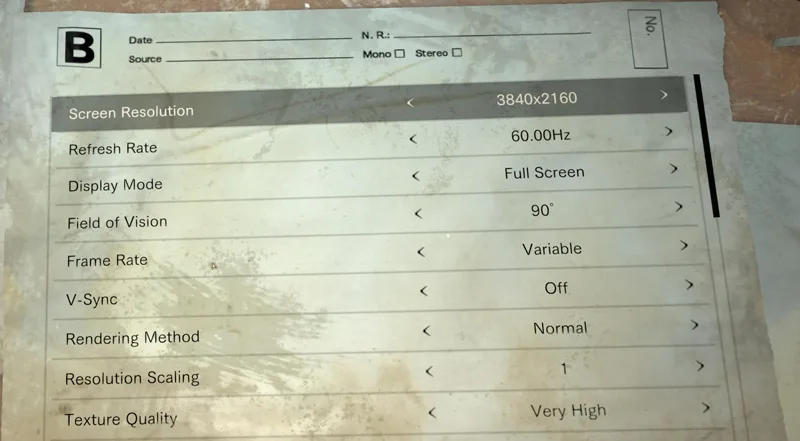

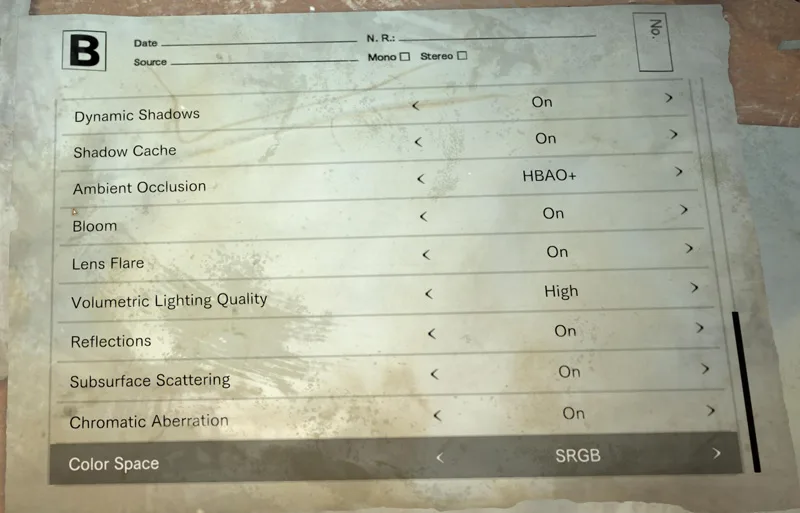
Image Quality & Settings
Resident Evil 7 doesn’t have overall Low, Medium, High, Very High, and Ultra settings. Instead, a player is given a choice of adjusting 18 different settings individually. The game will make suggestions as to what settings to lower by providing a ‘default’ setting. However, it tends to lower settings too far. A NVIDIA graphics card owner may also choose to use the GeForce Experience to suggest optimal settings, and NVIDIA has offered some suggestions in their Resident Evil 7 graphics and performance guide.
Now let’s look at a series of screen shots taken from the same two places beginning with the highest settings and progressing through several other setting options. Make sure to open these images full sized into a separate window or tab for a much easier IQ comparison.
Highest Settings (including HBAO+ and FXAA+TAA)
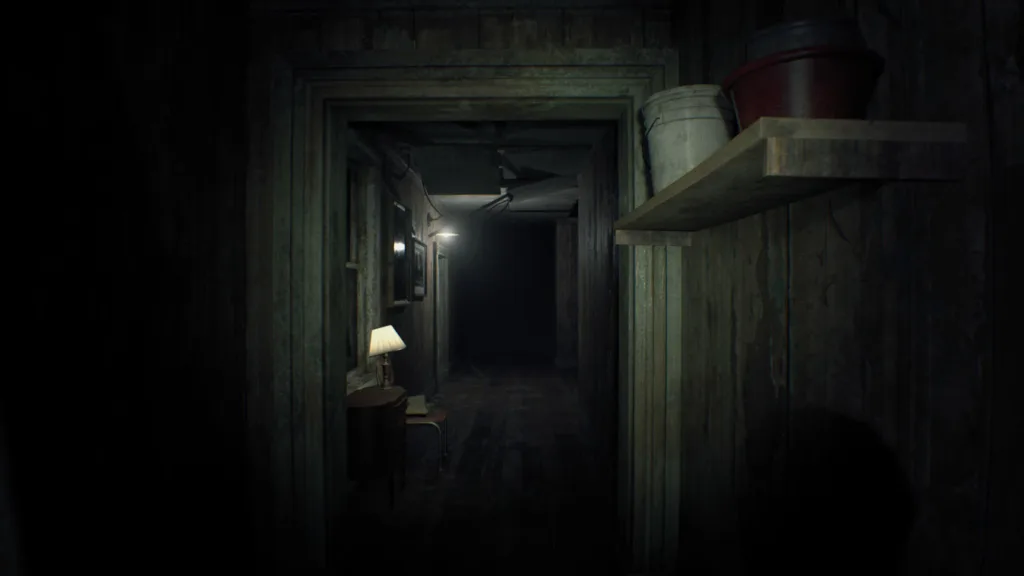

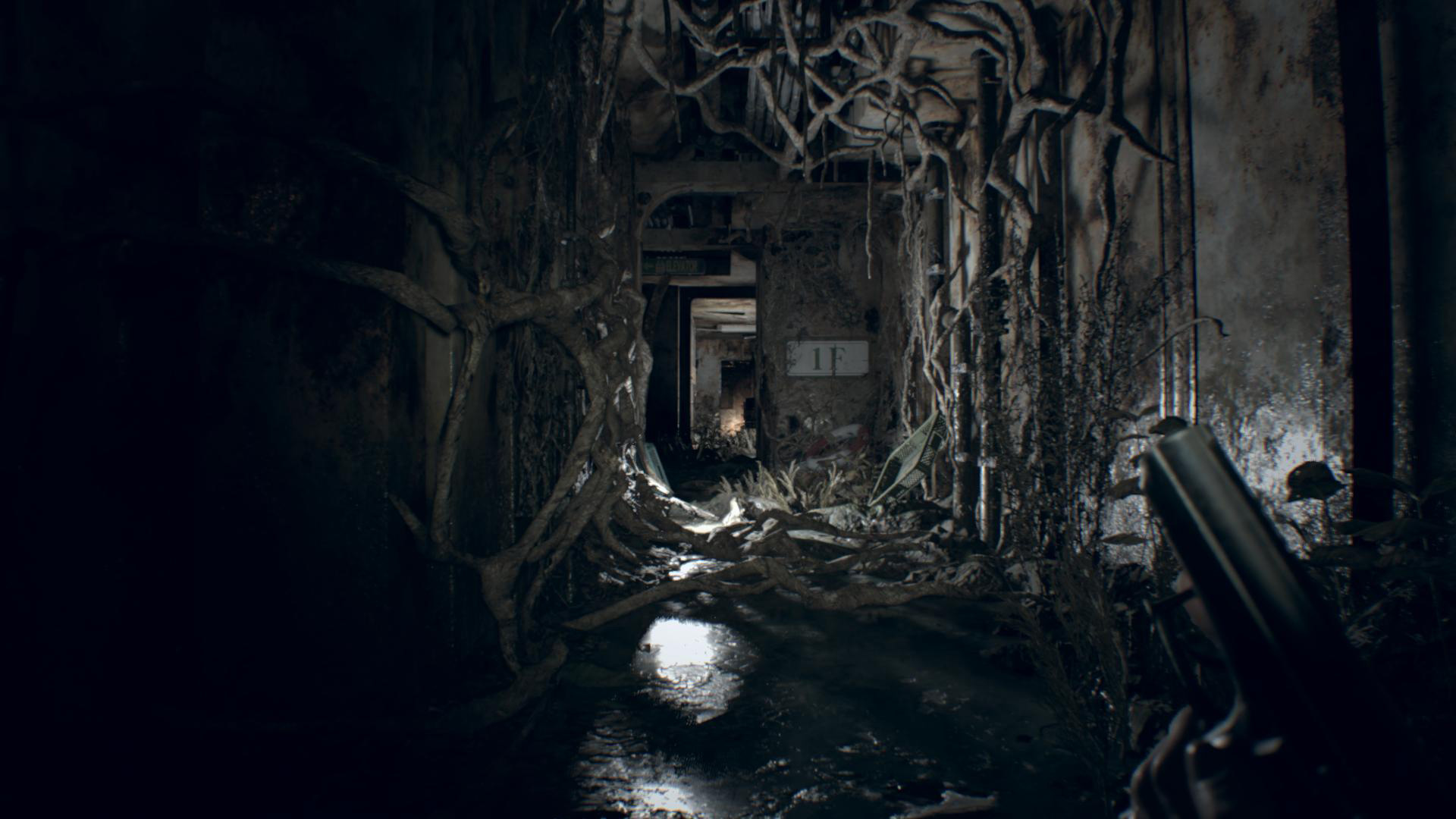
Low – all lowest settings
As with all the following comparison images, first at 3440×2160 and then at 1920×1080:
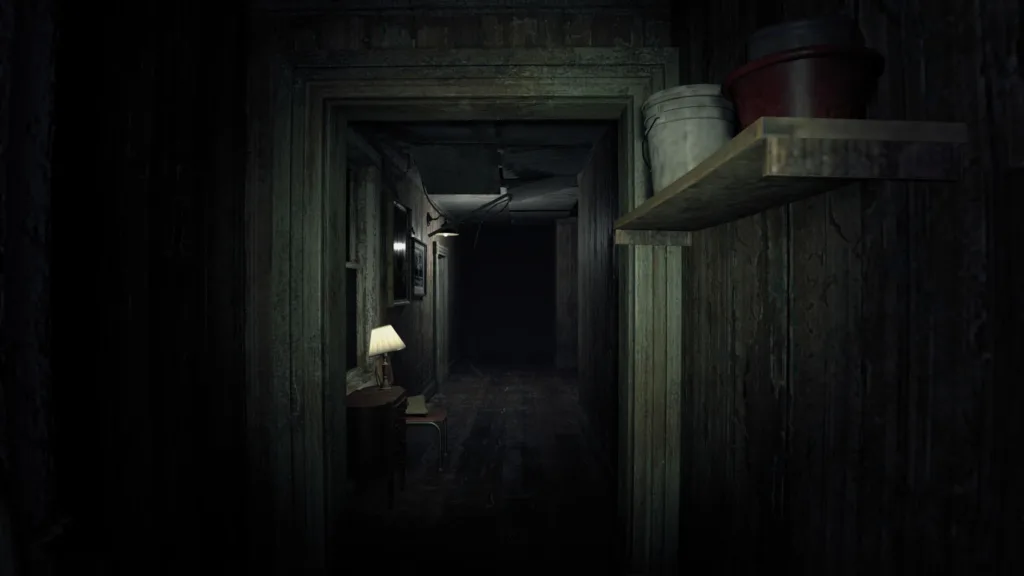
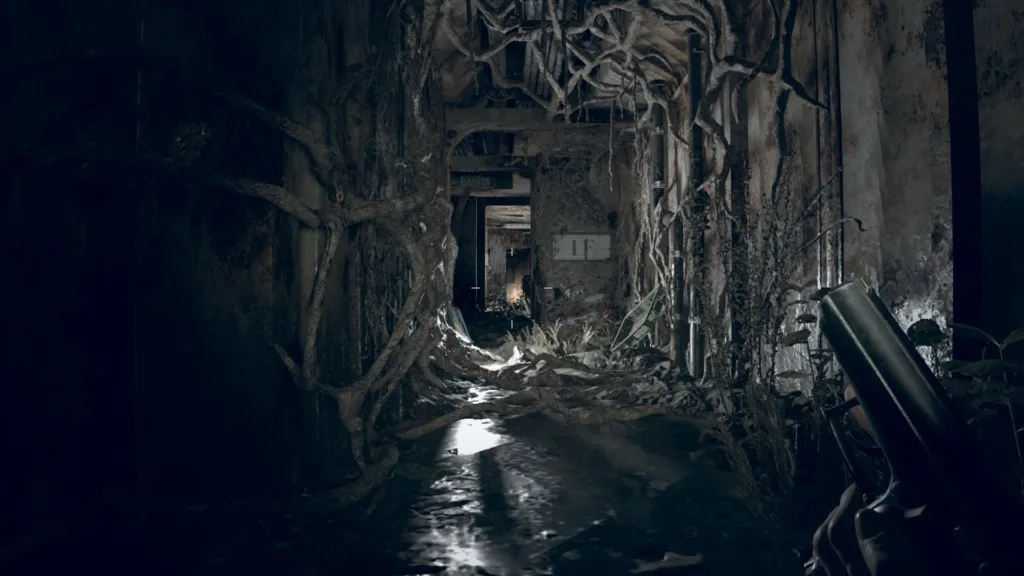
As you can see, Low settings look decent even if the lighting is pre-baked and a little washed, out but the detail is still good even if shadows are weak. And with setting on all-low, RE7 will play on a toaster – well, a GTX 1060-3GB that struggles to maintain 40 FPS at maxed settings at 1920×1080 will fly with over 130 FPS!
Highest settings – Low Texture/Texture Filtering settings
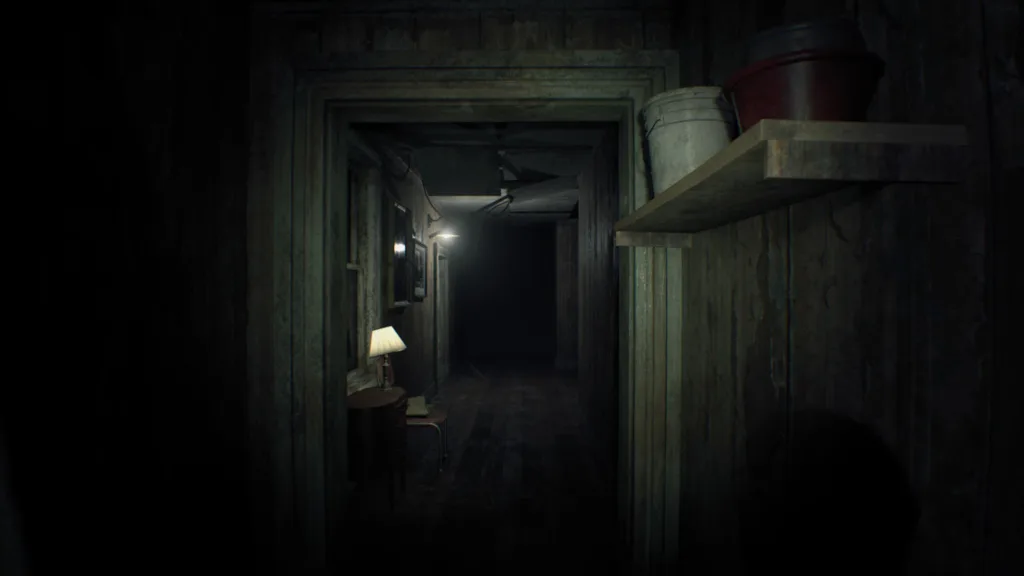
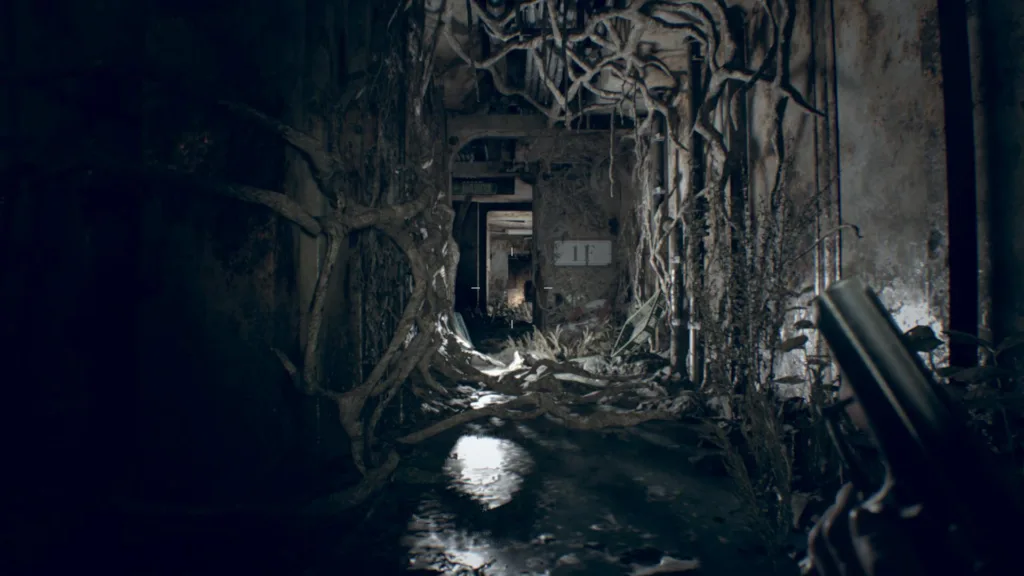
Texture Filtering or Anisotropic Filtering sharpens textures and leads to a cleaner image while Texture Quality affects the resolution of the game’s textures. The higher the texture quality, more VRAM is used by the graphics card. In the above images, we maxed out all of the settings but left the Texture settings on their lowest so that vRAM is less impacted. And our GTX 1060/3GB now gets at least an additional 10 FPS over maxed out settings with very high texture settings.
Lowering textures settings are a good place to start after lowering shadows to look for performance if your card has less than 6GB of vRAM, but leave Texture Filtering on.
Highest Settings but No Ambient Occlusion
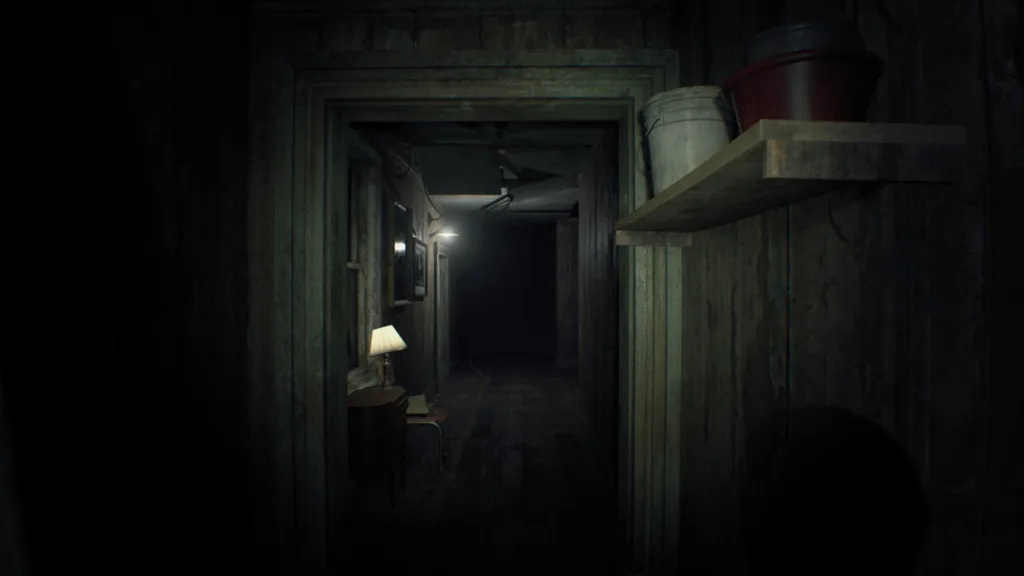
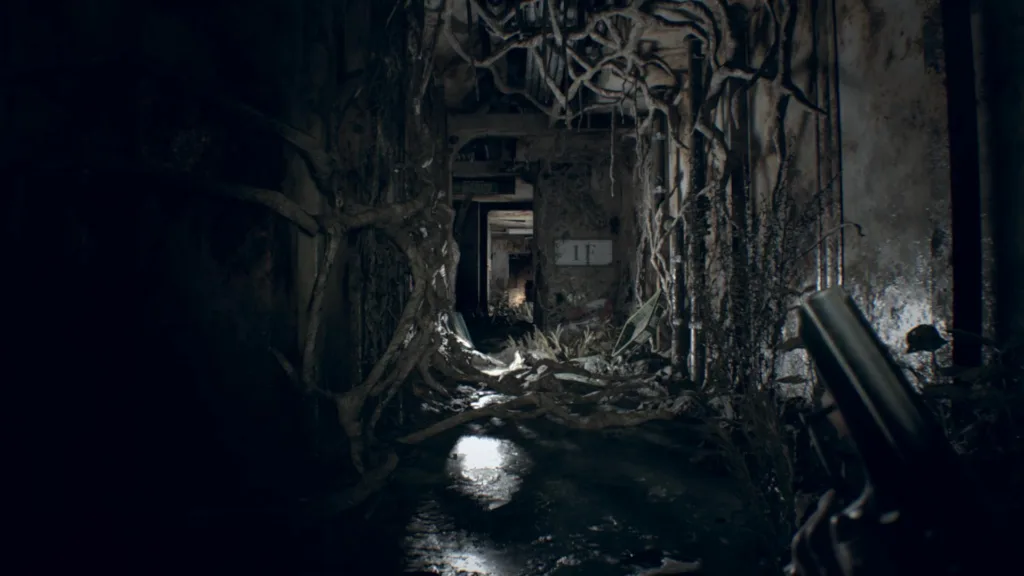
Ambient Occlusion (AO) affects the contact shadows where two objects meet and it lends an additional layer of realism to the environment. However, Ambient Occlusion will take a large performance hit when it is enabled – perhaps up to 30 percent of the total framerates. Because RE 7 is so dark, AO is a setting that can be turned off, but if it can be applied, it adds significantly to the immersion.
Highest Settings but with SSA0 instead of HBAO+
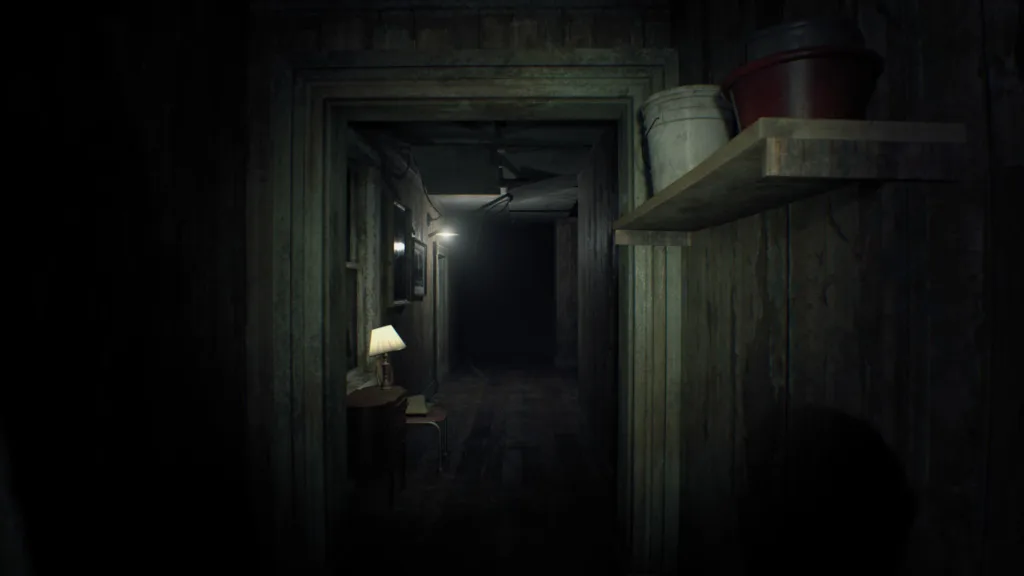

If HBAO+ is too demanding for the chosen video card, SSAO is a good step back that will give about ten percent more performance.
Highest Settings – plus 2 times resolution scaling (SuperSampling)
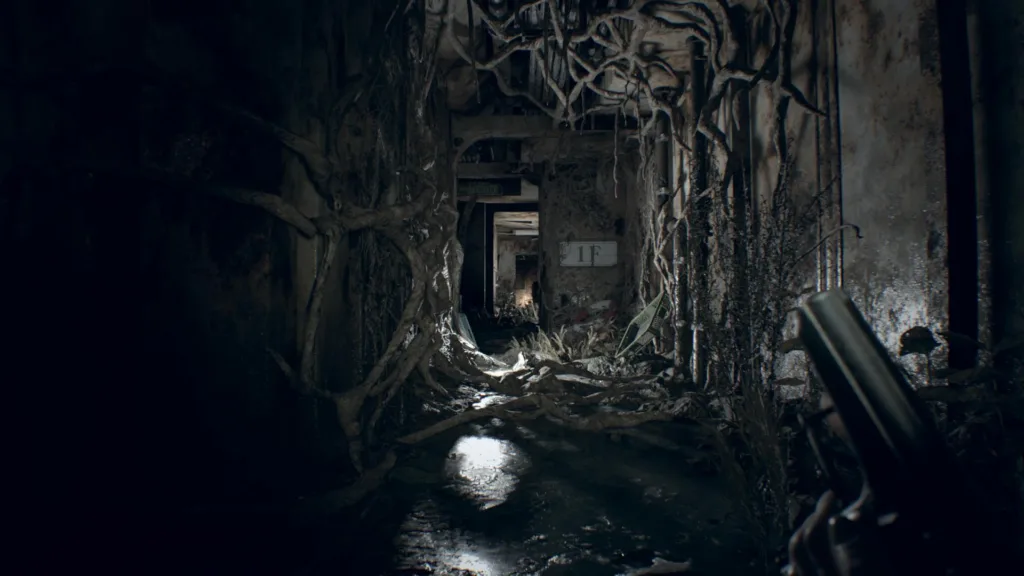

The highest settings with Resolution Scaling 2.0 (SuperSampling) is a real performance killer. It may be best to try it perhaps at 1920×1080 with a GTX 1080 for playing, or just for that killer screenshot. It can be enabled also with a TITAN XP. When resolution scaling is used at 2 times, it completely eliminates the blurriness that using FXAA, SMAA or FXAA+TAA cause. However, using FXAA+TAA gives the best images with the camera in motion as the crawling and shimmering is apparent by not using TAA. AA is not that important to still screenshots, but it is very helpful with the camera in motion.
Other Settings
Depth of Field (DOF) blurs the images which are out of the player’s focus. It is a cinematic type of rendering which adds to the game’s atmosphere in attempting to replicate (and exaggerate) human vision. However, it has a strong performance impact by being turned on. Volumetric Lighting and Shadow Quality also affect performance significantly but turning them off hurts the realism of the visuals.
Let’s look at our Test configuration on the next page.
Test Configuration – Hardware
- Intel Core i7-6700K (reference 4.0GHz, HyperThreading and Turbo boost is on to 4.4GHz; DX11 CPU graphics).
- ASRock Z7170M OC Formula motherboard (Intel Z7170 chipset, latest BIOS, PCIe 3.0/3.1 specification, CrossFire/SLI 8x+8x)
- HyperX 16GB DDR2 (2x8GB, dual channel at 3333MHz)
- GTX TITAN XP 12GB
- GTX 1080 8GB
- GTX 1070 8GB
- GTX 1060 6GB
- GTX 1060 3GB
- GTX 1050 Ti 4GB
- GTX 980 Ti 4GB
- GTX 980 4GB
- GTX 970 4GB
- GTX 780 Ti 3GB
- GTX 770 – 2GB
- Fury X 4GB
- RX 480 8GB
- RX 470 4GB
- RX 460 4GB
- R9 290X 4GB
- RX 280X 3GB
- RX 270 3GB
- Two 2TB Seagate FireCuda 7200 rpm SSHDs for each platform
- EVGA 1000G 1000W power supply unit (for both platforms)
- Thermaltake Water2.0, supplied by Thermaltake
- Onboard Realtek Audio
- Genius SP-D150 speakers, supplied by Genius
- Thermaltake Overseer RX-I full tower case, supplied by Thermaltake
- ASUS 12X Blu-ray writer
- Monoprice Crystal Pro 4K
Test Configuration – Software
- GeForce WHQL 378.49 was used for all NVIDIA cards. High Quality, prefer maximum performance, single display. See control panel images below.
- AMD Crimson Software 17.1.1 hotfix drivers were used for all AMD cards. See control panel image below.
- VSync is off in the control panel. G-SYNC is off.
- Specific settings enabled as noted on the chart.
- All results show average frame rates including minimum frame rates shown in italics on the chart next to the averages in smaller font.
- Highest quality sound (stereo) used in all games.
- Windows 10 64-bit Home edition, RE 7 was run under the DX11 render paths. Latest DirectX
- RE 7 has been patched to its latest version at time of publication.
- MSI’s Afterburner used to set all Power Limit/Draw and temperatures to maximum and clocks to reference speeds.
The Game
- Resident Evil 7 Biohazard, digital Steam retail copy
AMD Crimson Control Center Settings
We used the latest ReLive 17.1.1 drivers with these settings and used MSI’s Afterburner to lock the boost clocks to reference as well as set the power limit and temperature sliders to their maximums.
Nvidia Control Panel settings
We use Nvidia’s latest drivers plus used MSI’s Afterburner to set all the clocks locked to the reference speeds and also set the Power and temp limits to their maximums.

 Let’s check the performance of our eighteen tested video cards on the next page and then head for our conclusion.
Let’s check the performance of our eighteen tested video cards on the next page and then head for our conclusion.
Performance & Conclusion
NVIDIA has their own optimization suggestions which may be quite helpful, or a player can just use the GeForce Experience included with the latest recommended 378.49 GeForce drivers. The GeForce Experience will, at the touch of a button, set near-ideal custom settings for any PC and for more than 100 other games.
For the best AMD experience, use the latest drivers – Crimson Software ReLive 17.1.1 or 17.1.2 hotfix which are both optimized for RE 7
Performance
A GTX 1080 can max out RE 7 at the highest settings at 3840×1080 if you don’t mind framerate dips into the low 40s. RE 7 is a fairly demanding and a good-looking game that scales very well.
There is no built-in benchmark but we found and created one from a minute-long scene that is 100% repeatable and reasonably representative of RE 7 gameplay’s most demanding scenes. However, it falls about ten percent short of the most demanding scenes in extreme boss battles.
Here are our performance results using 18 video cards at 3 resolutions using the Highest settings. Average framerates are given in bold and the minimums are shown in italics in slightly smaller font next to the averages.
Here is the chart of 3860×2160 showing average and minimum framerates.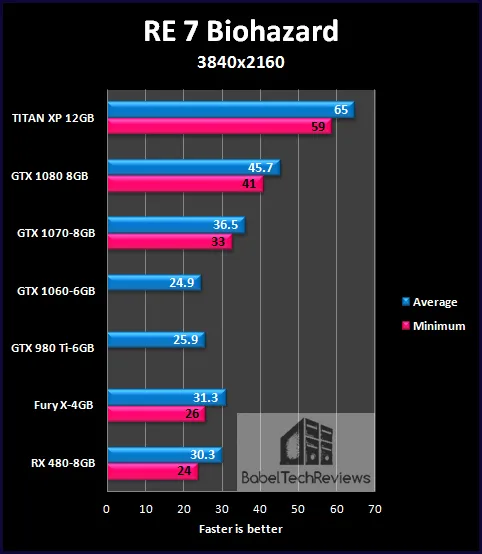
You will probably need 6GB of vRAM to max out your settings if you game above 1920×1080 resolution. We can see how the 3GB GTX 1060 struggles compared with the 6GB version and it may need to be optimized further by NVIDIA’s driver team. It is surprising to see a slower card, the GTX 1050 Ti 4GB, beat the 3GB GTX 1060. And older cards such as the 290X don’t fare as well as the RX 470 although both are 4GB cards. The GTX 780 Ti 3GB even falls slightly behind the GTX 970 4GB card. And even the Fury X appears to be somewhat limited by its 4GB of vRAM compared with the GTX 980 Ti and even with the RX 480/8GB video card. Perhaps some further memory management by AMD’s driver team will improve its performance.
The TITAN XP is the only card that can play RE 7 at 3840×2160 at 60 FPS with maxed out settings although the GTX 1080 can manage it with drops into the 40s FPS. Both the GTX 1080 and the GTX 1070 are well-suited for playing smoothly at 2560×1440 and the RX 480 isn’t far behind. And quite a few cards are well suited for maximum settings at 1920×1080. Let’s head for our conclusion.
Conclusion
RE 7 is a really fun game and it is the most fun we have ever had with a horror/survival game. We would have probably finished in two session instead of three if we did not have to sleep the first night right after it released. And when we woke up the next morning, we returned immediately to the game to complete it in two more long sessions.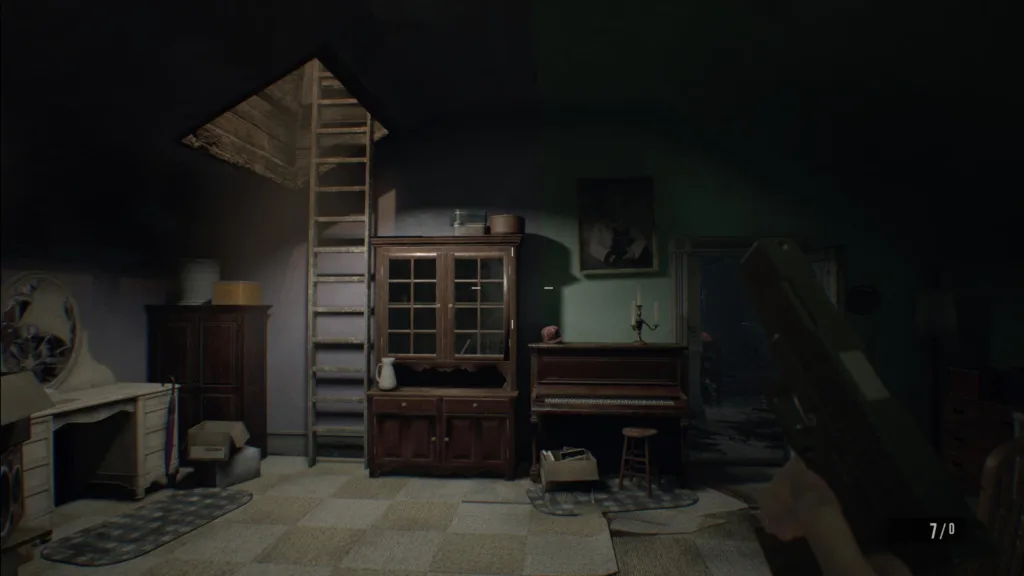
If we have to give it a score, Resident Evil 7 Biohazard deserves an “8.5” in our opinion as a very polished horror/survival single player campaign. What it does, it does very well. Gameplay is smooth and nearly flawless and the atmosphere of terror, disgust, and apprehension that it creates is flawless.
RE 7 comes highly recommended and it is a certain hit for Resident Evil series fans – especially those who may have been disappointed with the direction that the series took since RE 4. The graphics are very good, the gameplay is excellent, and the story is decent enough to move the action without insulting the player’s intelligence. The voice acting is absolutely top-notch and it feels like a long nightmare horror movie experience. We feel it is worth the $60 asking price for a decent length and excellent single player adventure.
RE 7 has become BTR’s latest benchmark. Stay tuned as we have many more reviews and evaluations coming up. This week, you can expect a full review of the 2TB Seagate FireCuda SSHD versus a regular 7200 rpm 2TB HDD. And we are also updating our drivers for our next driver performance evaluation to see if the GTX 1060 has regained performance after the last driver regression.
Happy Gaming!



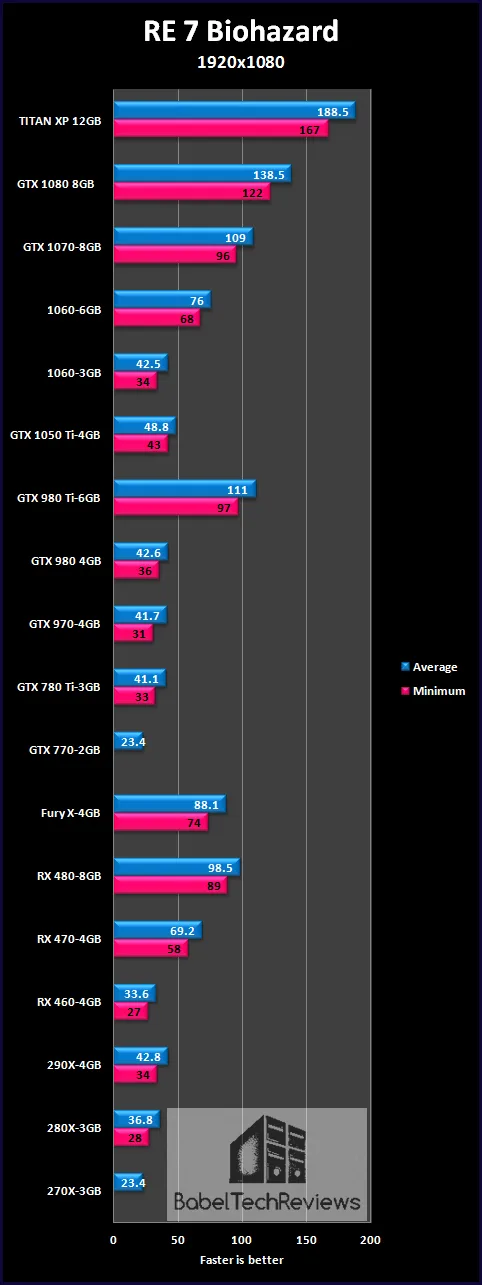
Comments are closed.